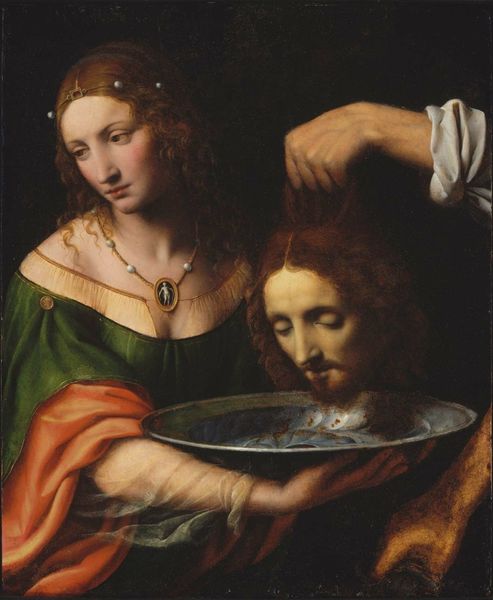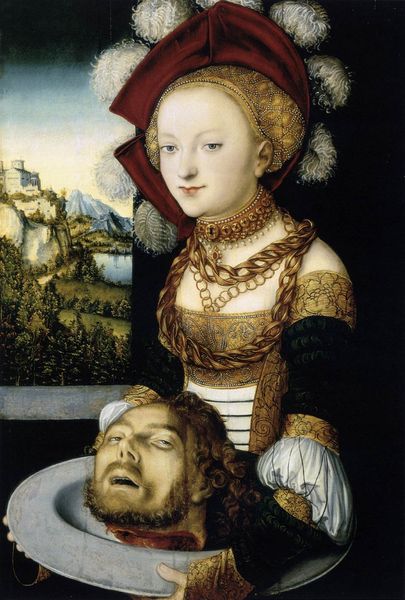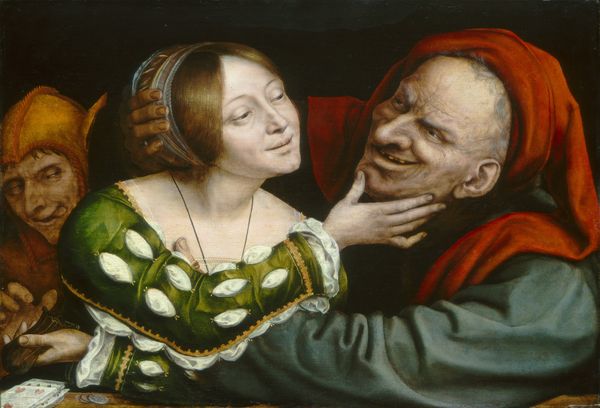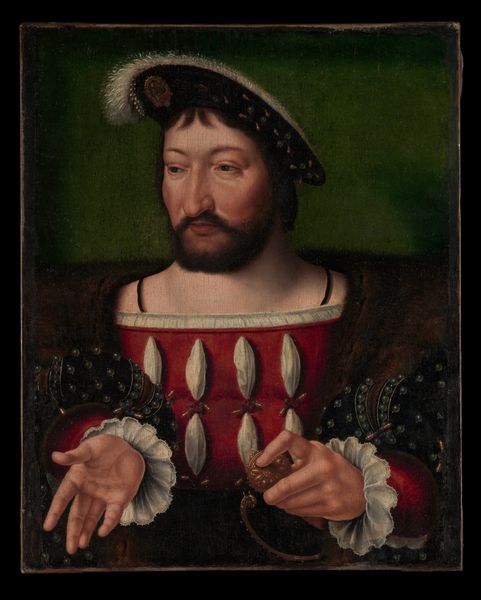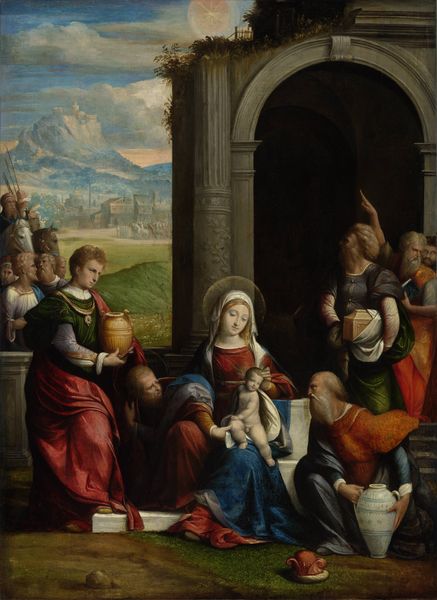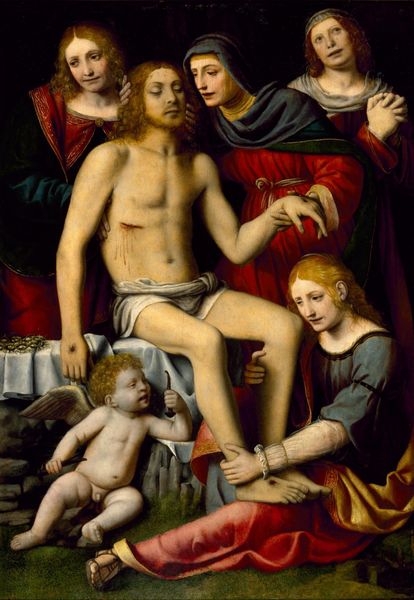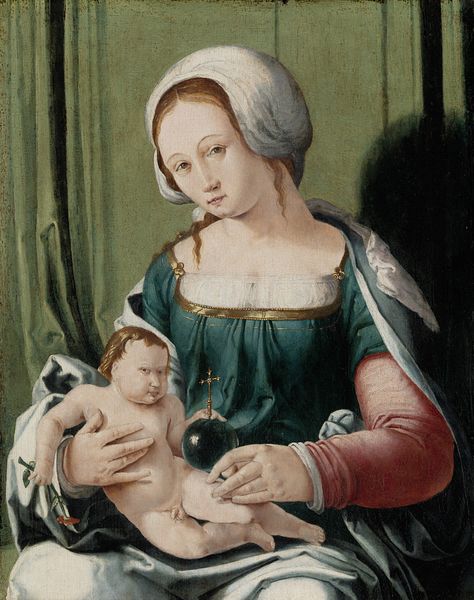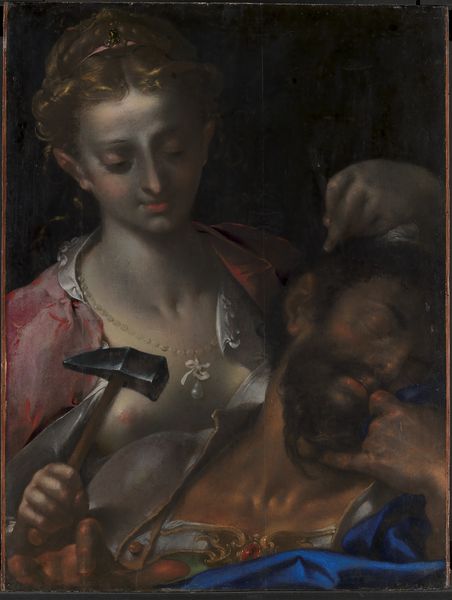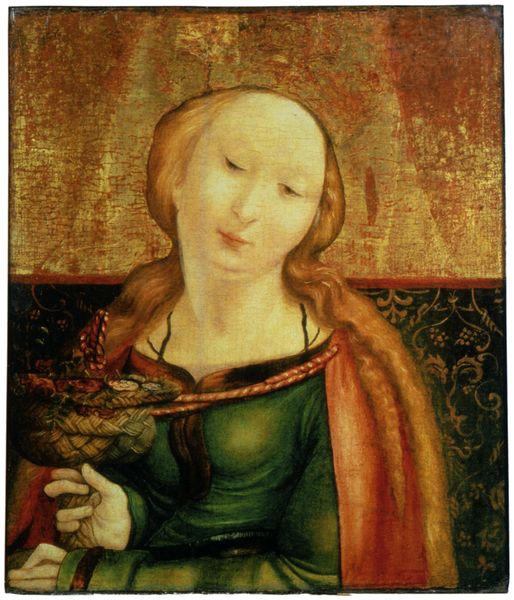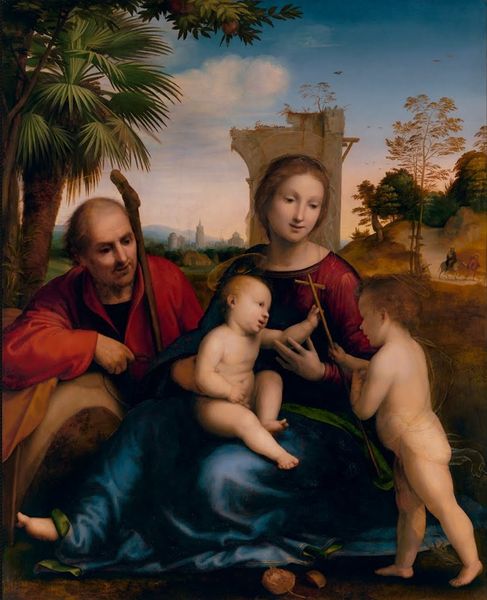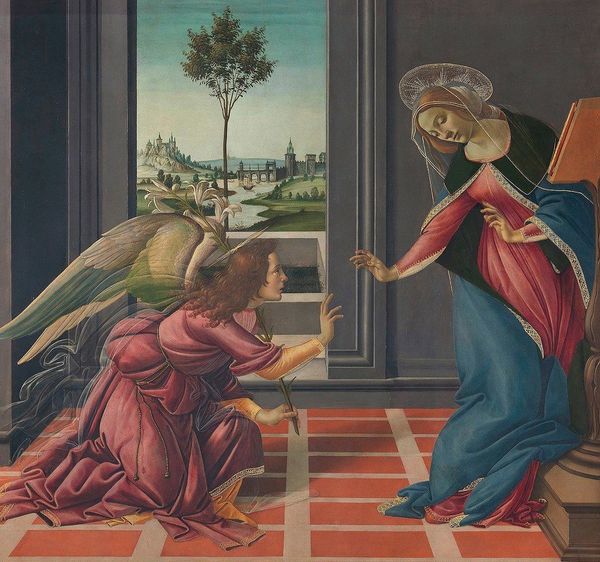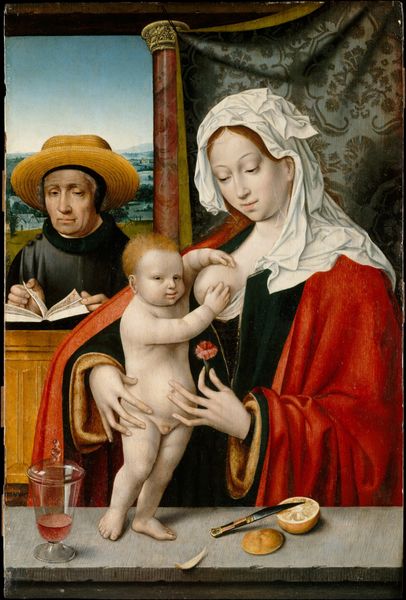
Salome with the Head of Saint John the Baptist 1507 - 1509
0:00
0:00
oil-paint
#
portrait
#
high-renaissance
#
venetian-painting
#
narrative-art
#
head
#
oil-paint
#
figuration
#
oil painting
#
history-painting
#
italian-renaissance
#
portrait art
#
self portrait
Dimensions: 22 1/2 x 18 1/2 in. (57.2 x 47 cm)
Copyright: Public Domain
Curator: Oh, Salome... here we are again, staring into the void. Andrea Solario’s "Salome with the Head of Saint John the Baptist," created around 1507-1509. It’s a stunner, isn’t it? Currently hanging at The Met. Editor: It is striking. There’s an unexpected quietness to it. It's not gruesome like other depictions I've seen. More… melancholic. Her expression, that downcast gaze, it doesn't scream triumph. Curator: Exactly! This isn’t some victorious, bloodthirsty vixen. This Salome… she’s complicated. Solario paints her almost remorseful. Or maybe she is just weary after having made some very bad choices. There is also a vulnerability to it which is amplified by the rich texture. The beads in her hair. the elaborate costume...It all has such detail. Editor: I think that reading might be giving too much credit. Isn't the real horror here how these powerful people abuse that very power, particularly over imagery and controlling the narrative. We have seen throughout time people commissioning artwork for some questionable purposes. Curator: Yes but isn't it fun when the artist manages to imbue their characters with their own agenda and motivations. We only know John the Baptist through this painting as a static item in Salome's play but it could be interpreted as Solario suggesting, however slightly, that Salome wasn't such a malicious and simple being as her actions seem. Look at the almost ethereal skin tone of John, it has all the light on it while the background has none. Is he implying anything there? Editor: You're suggesting Solario might be subtly critiquing power structures? While Renaissance art certainly served propaganda purposes, looking closer unearths subversive commentary. Think of the cultural significance of Salome. Is the artist glorifying or dissecting how society constructs its symbols of beauty and power? Curator: Precisely! Or maybe…and here’s a thought – maybe Solario just liked painting beautiful women and shiny platters. Editor: Ha! Occam’s razor for art history, I love it. Maybe Solario was simply being sensational! This painting really is a meditation on how we see – and judge. Curator: It is and thank goodness the painting found its forever home at the Met and generations have the opportunity to visit it! I know I'll always return...
Comments
No comments
Be the first to comment and join the conversation on the ultimate creative platform.
